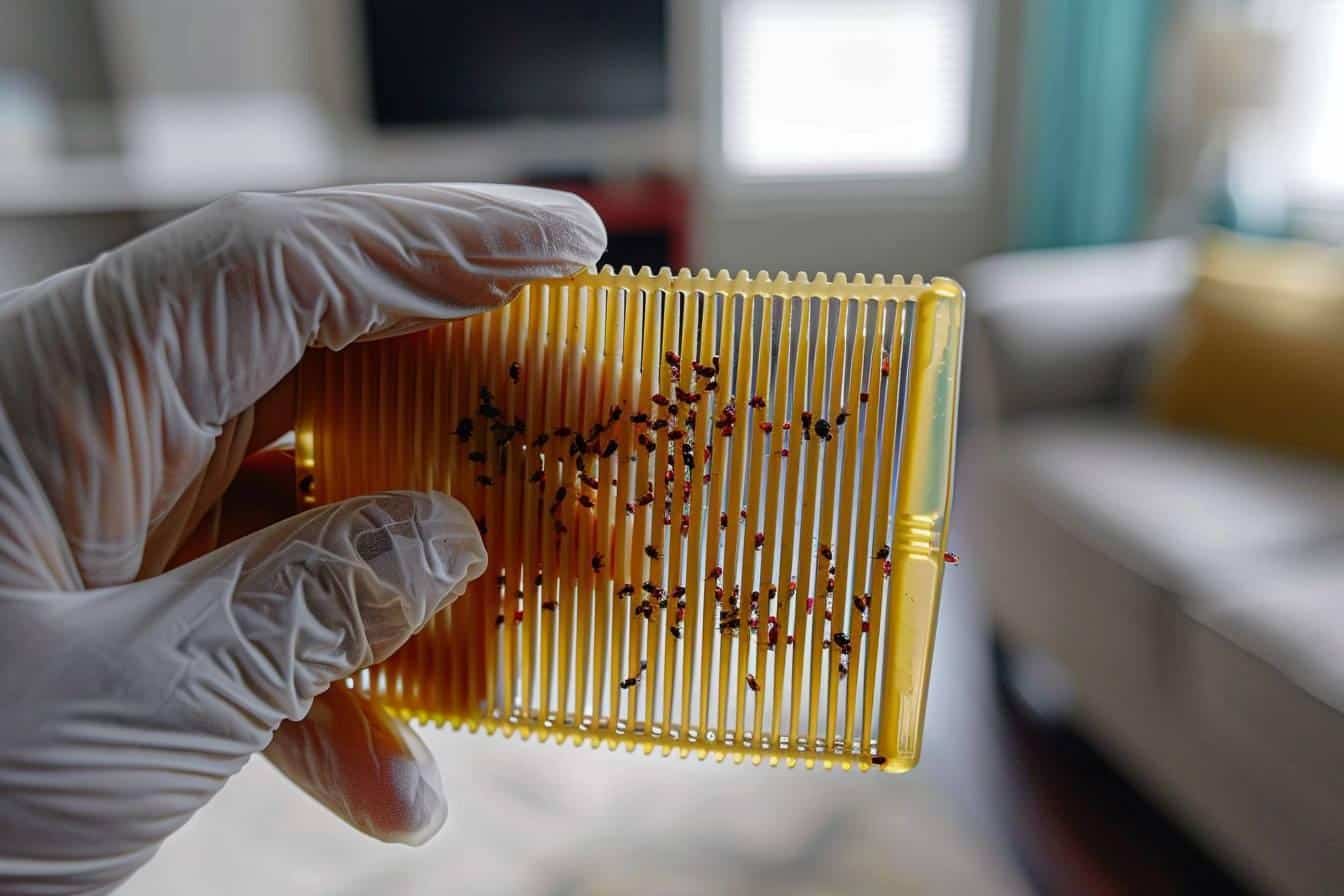Dealing with a flea infestation can be a frustrating and challenging experience for pet owners and homeowners alike. These tiny, persistent pests can quickly multiply and spread throughout your living space, causing discomfort for both humans and animals. Fortunately, there are effective methods to eliminate fleas and prevent future infestations. This article will explore various strategies and techniques to help you get rid of fleas and maintain a pest-free environment.
Identifying and understanding flea infestations
Before diving into flea elimination methods, it’s crucial to recognize the signs of a flea problem. Fleas are small, wingless insects that feed on the blood of mammals and birds. They’re known for their incredible jumping ability, which allows them to move quickly between hosts and surfaces. Common indicators of a flea infestation include :
- Excessive scratching or biting by pets
- Small, dark specks (flea dirt) in your pet’s fur
- Tiny, reddish-brown insects jumping on carpets or furniture
- Red, itchy bites on humans, often around ankles and legs
Understanding the flea life cycle is essential for effective control. Ctenocephalides felis, the common cat flea, goes through four stages : egg, larva, pupa, and adult. Adult fleas lay eggs on their host, which then fall off into the environment. These eggs hatch into larvae, which feed on organic matter and eventually spin cocoons to become pupae. Finally, adult fleas emerge from the cocoons, ready to feed and reproduce.
Fleas can be particularly problematic due to their rapid reproduction rate. A single female flea can lay up to 50 eggs per day, potentially leading to a full-blown infestation within weeks. This is why early detection and swift action are crucial in managing flea problems effectively.
Treating your pets for fleas
Since pets are often the primary hosts for fleas, treating them is a critical step in eliminating an infestation. There are several effective flea treatments for pets available, including :
- Topical treatments (spot-on medications)
- Oral medications
- Flea collars
- Flea shampoos and dips
Consult with your veterinarian to determine the most suitable treatment for your pet. They can recommend products based on your pet’s age, weight, and overall health. It’s important to note that some over-the-counter flea treatments may not be as effective as prescription options.
When applying flea treatments, follow the instructions carefully. Improper use can lead to ineffective results or even harm your pet. Remember to treat all pets in your household, even if only one shows signs of fleas. This prevents reinfestation from untreated animals.
In addition to medication, regular grooming can help detect and remove fleas. Use a fine-toothed flea comb to check your pet’s fur for fleas and flea dirt. Pay special attention to areas like the neck, base of the tail, and underbelly, where fleas often congregate.

Eliminating fleas from your home
Treating your pets is only half the battle. To completely eradicate a flea infestation, you must also eliminate fleas from your home environment. This process involves a combination of cleaning, vacuuming, and applying insecticides. Here’s a comprehensive approach to rid your home of fleas :
1. Thorough cleaning : Start by washing all bedding, pet beds, and removable fabric covers in hot water. This kills fleas in all life stages. Vacuum carpets, rugs, and upholstered furniture thoroughly, paying extra attention to cracks and crevices where flea eggs and larvae may hide.
2. Steam cleaning : For severe infestations, consider steam cleaning carpets and upholstery. The high heat effectively kills fleas at all life stages.
3. Use flea sprays or foggers : Apply insecticides specifically designed for flea control in your home. Follow the manufacturer’s instructions carefully, and ensure all occupants, including pets, are out of the house during treatment.
4. Treat outdoor areas : Don’t forget to address potential flea habitats outside. Treat your yard, focusing on shaded areas where pets frequent. Use outdoor flea sprays or consider professional pest control services for extensive infestations.
To help you choose the right flea control products, here’s a comparison of common options :
| Product Type | Pros | Cons |
|---|---|---|
| Flea Sprays | Easy to apply, fast-acting | May require multiple applications |
| Foggers | Covers large areas | Requires evacuation, may not reach all areas |
| Natural Remedies | Non-toxic, eco-friendly | May be less effective for severe infestations |
| Professional Treatment | Thorough, long-lasting results | More expensive, may involve stronger chemicals |
Remember, persistence is key when dealing with flea infestations. It may take several weeks of consistent treatment to completely eliminate all fleas and their eggs from your home.
Preventing future flea infestations
Once you’ve successfully eliminated fleas from your pets and home, it’s essential to take steps to prevent future infestations. Here are some effective preventive measures :
- Regular pet treatments : Continue using flea preventatives on your pets year-round, even if you don’t see visible signs of fleas.
- Routine cleaning : Vacuum frequently and wash pet bedding regularly to remove any potential flea eggs or larvae.
- Yard maintenance : Keep your lawn mowed and remove debris where fleas might hide. Consider using nematodes, microscopic worms that feed on flea larvae, as a natural outdoor control method.
- Monitor for early signs : Regularly check your pets for signs of fleas, especially after they’ve been outdoors or in contact with other animals.
- Natural repellents : Some pet owners find success with natural flea repellents like cedar chips or certain essential oils. However, always consult with your vet before using any new products on your pets.
By implementing these preventive strategies, you can significantly reduce the risk of future flea infestations and maintain a comfortable, pest-free environment for both you and your pets.
In the battle against fleas, knowledge and persistence are your greatest allies. Understanding flea behavior, implementing effective treatment methods, and maintaining vigilant prevention practices will help you keep these pesky pests at bay. With the right approach, you can enjoy a flea-free home and ensure the comfort and health of your beloved pets.

